

 The Accurate Reloading Forums
The Accurate Reloading Forums  THE ACCURATE RELOADING.COM FORUMS
THE ACCURATE RELOADING.COM FORUMS  Rifles
Rifles  Black Powder Cartridge Rifles
Black Powder Cartridge Rifles  Rolling Block Musings
Rolling Block MusingsGo  | New  | Find  | Notify  | Tools  | Reply  |  |
| one of us |
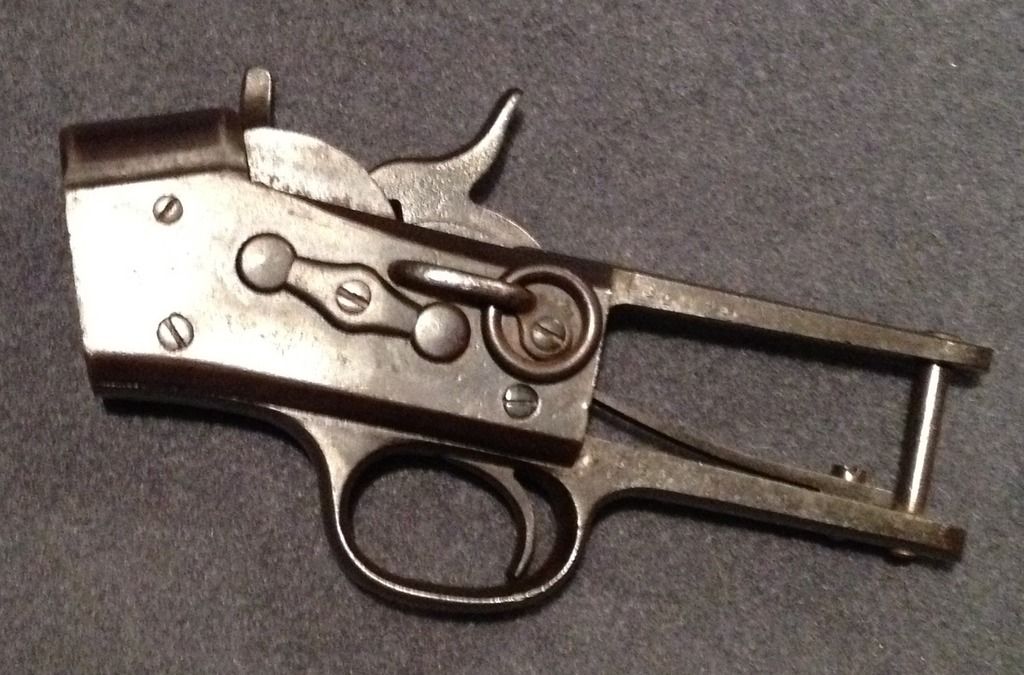 I found this action at a local gunshow, for $100. It is missing the sliding bar extractor (type found in earliest models, as opposed to the rotary type of later models) and seems to be in good shape otherwise. Is this the "No.1" or the "No. 1-1/2" Remington RB? I am going to have to do some "ciphering" on this Rolling Thunder. Cellphone photos, some in pretty good focus, and some not: 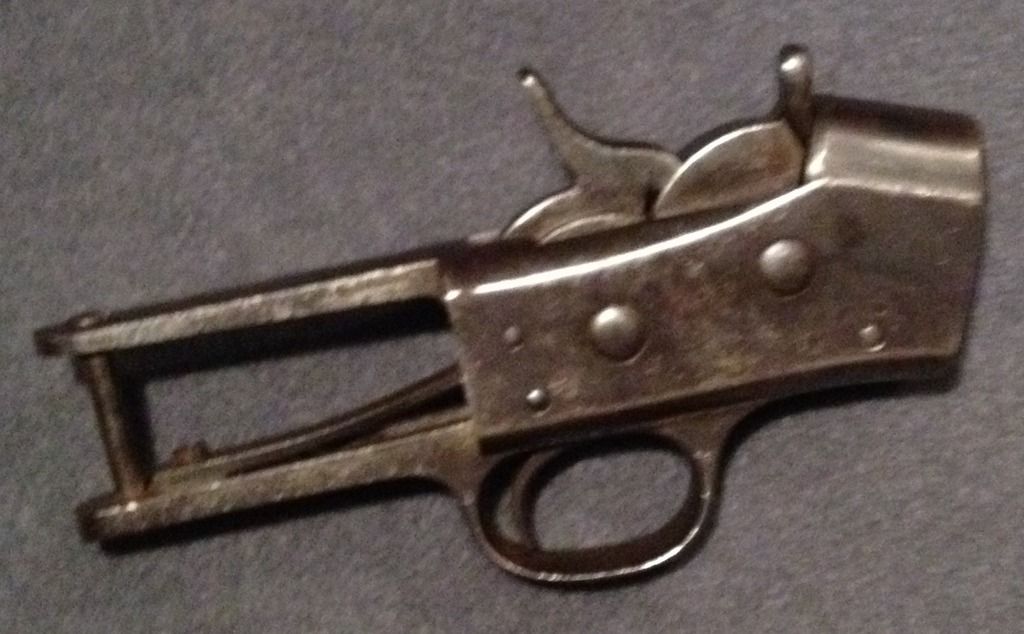   I also found an old original mould for 40-65 Winchester bullets lying beside the RB action and haggled the price on that down to $88:  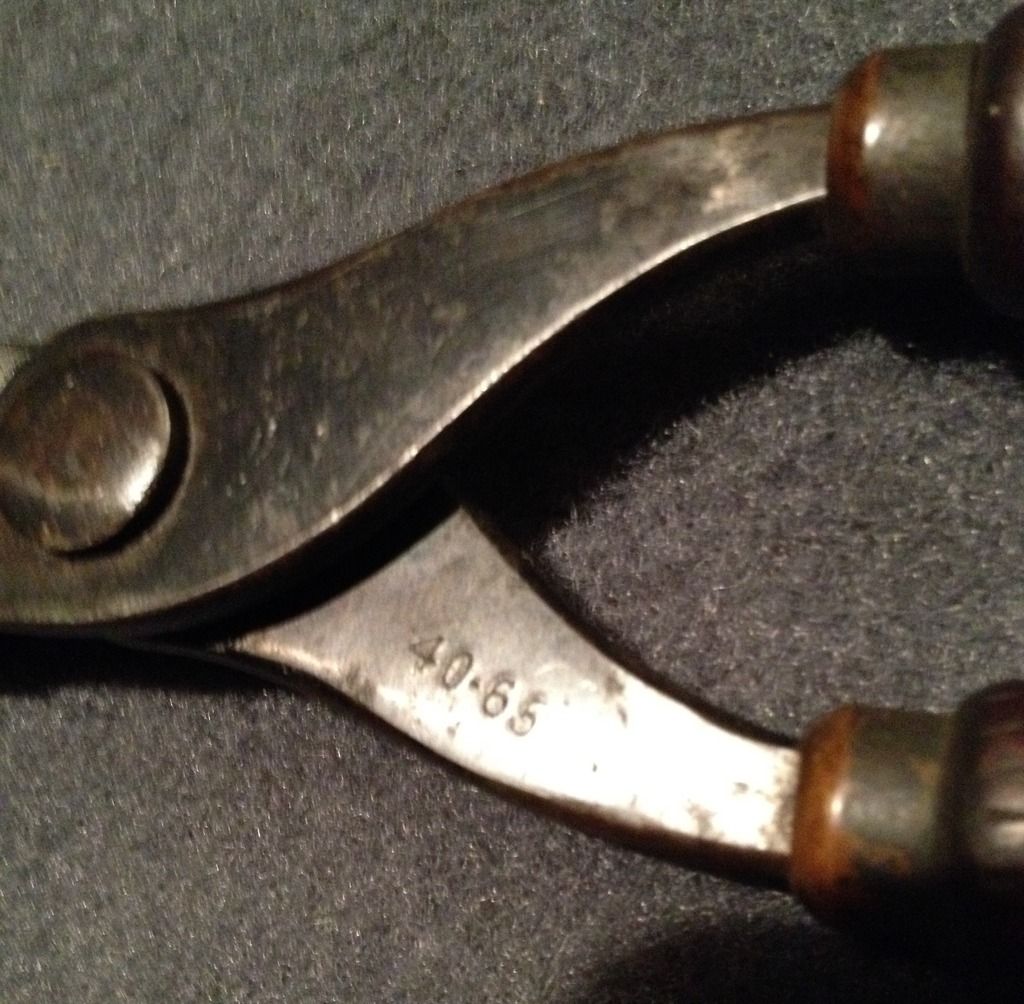 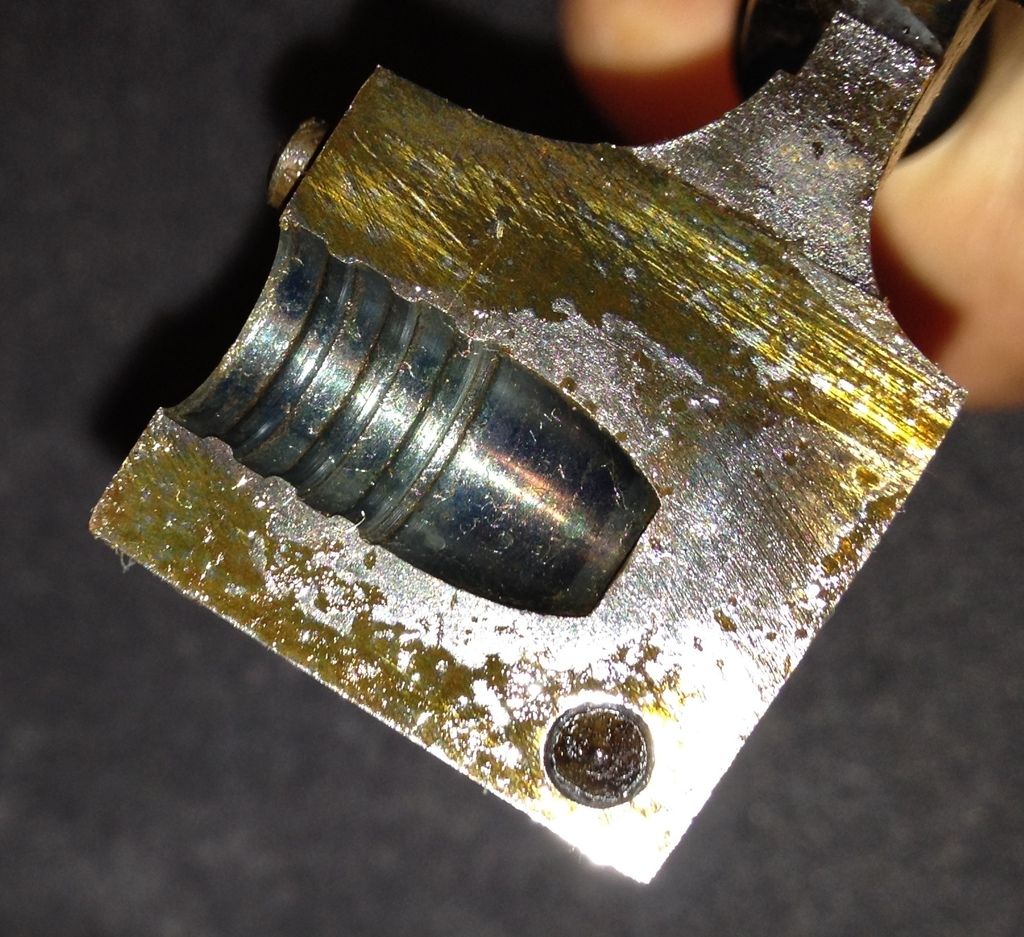 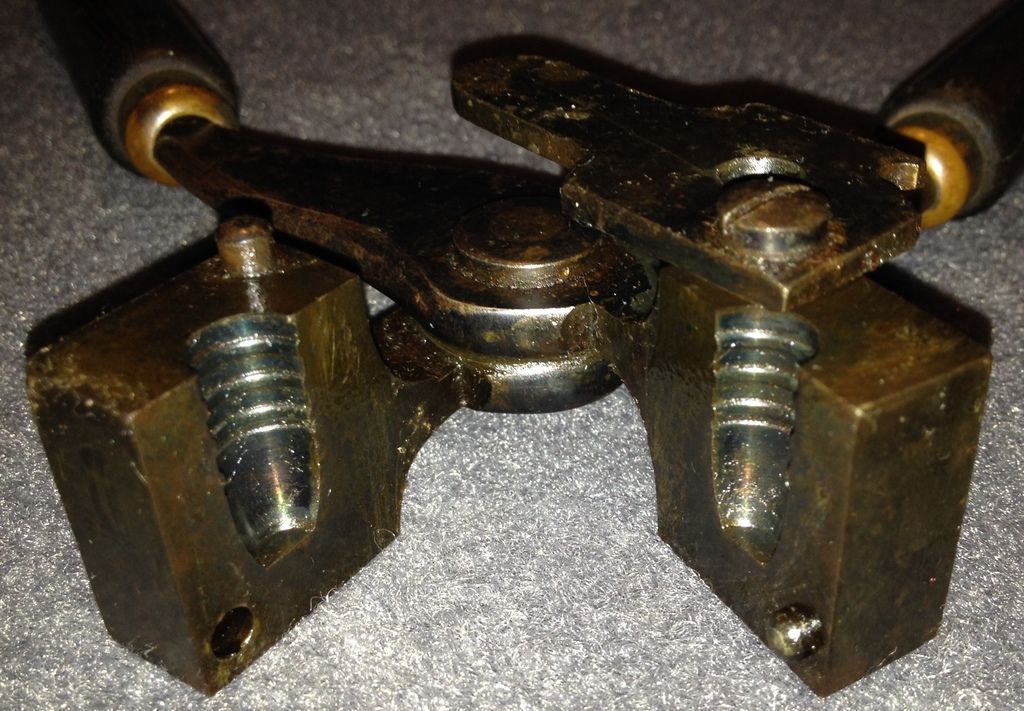 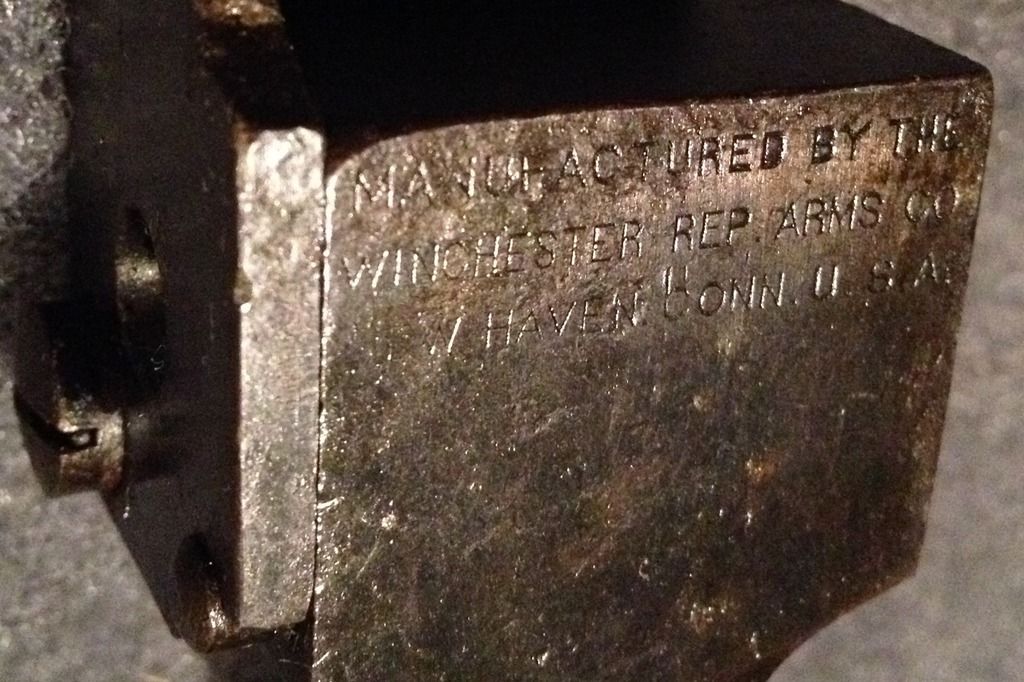 Seems to be a nudge toward building a 40-65 Winchester, according to a reading of the entrails. But could a 50-90 Sharps 2.5" fit into this action? More ciphering needed on my part. This action does have the lower profile hammer on it, and a saddle-ring for carbine kit. Might work up into some true grit as a 50-90 carbine, or something more useful as a 40-65 featherweight, a certain possibility requiring no ciphering. Here is an original 50-70 RB found at the Kansas City Cabela's. It has the tall hammer and a sling loop near the trigger guard, and a rotary extractor, IIRC. Cell pics from the Gun Library, just passing through:      | ||
|
| One of Us |
You actually thinking seriously bout returning that RB to service?! Why not use it as a pattern and have someone file you a new one? | |||
|
| one of us |
Noted: DOPPELGANGSTER will be no help with this cipherin'. | |||
|
| one of us |
RIP, with the carbine ring, I am guessing that might have been a Mexican carbine in .43 Spanish. I have seen a number over the years, as they seem to have been fairly common. You can get a straight extractor here: http://www.rollingblockparts.com/no-1.html I am a rolling block fan as well. My current rifle is a .50-70 on a re-heat treated Husqvarna action with Green Mountain 1:24 twist barrel. Need to get it blued, seal the stock and shoot the darned thing. If you build a rifle on your action, don't let anyone tell you the rollers are safe with smokeless. Even the Smokeless No. 5 lets go with discouraging regularity. A gun shop here in Oregon had a bunch of rolling blocks for sale and I asked the owner where they came from. His reply -- a rolling block collector was shooting mild smokeless 7X57 loads in a pristine No. 5 and it blew up, costing him an eye and nearly his life. That smokeless action opened like a blooming flower. He decided after that he was done with rolling blocks and consigned the whole collection. I think the No. 5 may be safe if respected, but then the same can be said about the low-numbered 1903 Springfields that a lot of guys would not shoot on a dare. There is hope, even when your brain tells you there isn’t. – John Green, author | |||
|
| One of Us |
Tru Dat. I know one when I see it, but couldn't cipher iterations and combobulatory variations. | |||
|
| one of us |
Ken at RollingBlockParts.com is a wealth of knowledge and can help you out with parts and has several nice sporter stock patterns. I have a Carl Gustav that is turning into a .50-70 and a nice No. 5 rifle that will eventually be something. The .45-90 can be a tight squeeze lengthwise, especially with long bullets. The .40-65 fits a roller really well and is a great gun to shoot. If you go with the .40-65, I recommend a 1:16 twist barrel so that you can shoot heavier bullets. One morning I shot an elephant in my pajamas. How he got into my pajamas I'll never know. - Groucho Marx | |||
|
| one of us |
Thanks, Bill and Boomer. I am ciphering with my books. My action width is about 1.325" so it is a fat No. 1, and the saddle ring suggests military, aye. I have ciphered that the No. 1-1/2 is a thinner version with action width of about 1.140", meant for smaller cartridges like 38-30 and 44-40. I am still ciphering on what cartridge I should go for, something in the 40-65 WCF to 50-70 Gov range, or dare I suggest 50-90 Sharps if the cartridge is not too long to slide past my short-spurred hammer? www.rollingblockparts.com site is helpful, I need part 1E: 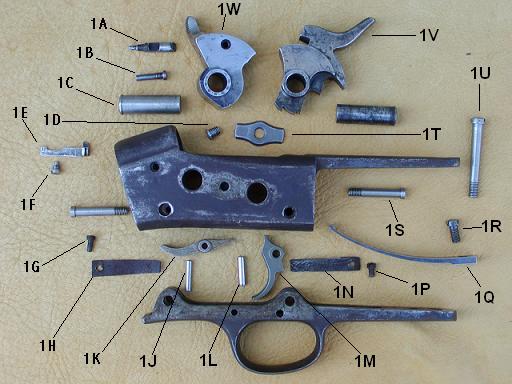 A spiffy little carbine like this is appealing, from the gallery at Ken's site:  That NY Militia 50-70 Gov (pictured in OP) above has 5 patent dates on it, as best as I can cipher (hard to read from photo). "REMINGTONS' ILION N.Y. U.S.A." is the first line "MAY 3d NOV 15th 1864 APRIL 17th 1866" in the second line, and "AUG 27th 1867 NOV 7th 1871" in the third line of the roll stamp on the top tang. My action has only the first two lines of print with only those first three patent dates in the second line, from 1864 and 1866. No 1867 or 1871 dates. Might suggest my action was made sometime after 1866 and before 1867-1871? Will continue cipherin' with the books. | |||
|
| One of Us |
That action has the small thread, and the top of the action is pretty thin, compared with most of the #1 actions like the Argentines. YMMV, but my personal opinion is that I would definitely not build a .50-90 on that action, and I'd much prefer one of the actions with more metal even for a .40-65. I saw a beautiful .22 made on an identical action last week. I don't know what your intended use may be, but the .40-65 mould you have is probably 0.406" diameter and something less than 300 grains (260 gr. IIRC), and so not useful for much other than short range shooting Clarence | |||
|
| One of Us |
What a pleasant trip down memory lane. When I was a small boy my dad gave me a .50-70 NY musket as my first rifle. It was not until 10 years later I found a bunch of .50-70 ammo loaded with black powder to shoot. I'd love to find another someday. Thanks for the pics. Cal _______________________________ Cal Pappas, Willow, Alaska www.CalPappas.com www.CalPappas.blogspot.com 1994 Zimbabwe 1997 Zimbabwe 1998 Zimbabwe 1999 Zimbabwe 1999 Namibia, Botswana, Zambia--vacation 2000 Australia 2002 South Africa 2003 South Africa 2003 Zimbabwe 2005 South Africa 2005 Zimbabwe 2006 Tanzania 2006 Zimbabwe--vacation 2007 Zimbabwe--vacation 2008 Zimbabwe 2012 Australia 2013 South Africa 2013 Zimbabwe 2013 Australia 2016 Zimbabwe 2017 Zimbabwe 2018 South Africa 2018 Zimbabwe--vacation 2019 South Africa 2019 Botswana 2019 Zimbabwe vacation 2021 South Africa 2021 South Africa (2nd hunt a month later) ______________________________ | |||
|
| One of Us |
Know nothing about he RB rifles, but while attending the Canadian National High Power Matches few years ago there were a group of black powder shooters there and the preferred rifle was the RB. The group was quartered in the same building as I and had opportunity to visit with them and met the fellow who had built most of the rifles being used for the matches. He turned out some very beautiful specimens of the rifle and turned in some impressive scores at the 900 meter targets. Of course after they shot it would take a few minutes for the smoke to clear to even see the target faces. Mixture of 45/70 and 45/90's and most preferred the 45/90. | |||
|
| one of us |
Thanks all for the replies, including the factual reporting of past experiences and observations, nostalgic recollections, and even the baseless opinion generated from my poor photograph of threads of the receiver. I got out my magnifying glass and looked at the last digit on my tang markings. It is a blurred "6" as in 1866, not 1868. I think I have this sorted out as well as anyone can, short of destructive analysis and gas chromatography for trace elements in the iron of the action. A very helpful reference is George Layman's book: THE MILITARY REMINGTON ROLLING BLOCK RIFLE Revised Fourth Edition Front cover of this soft-bound volume:  Back cover was a surprise:  The author is a BP shooter/addict since age 12 y.o. and an antique gun collector and Remington Rolling Block specialist since 1962 . He has had over 300 Rolling Blocks pass through his hands as of this 4th edition. He retired from the US Army after 21 years of service. The above and following excerpts are a review of the excellent book:       Excellent reference book. My action may have come from a No. 1 Remington Rolling Block carbine made prior to 1868. It is made of iron, not steel, if made prior to the 1897 model. It was most likely chambered originally for .43 Spanish or .50-70 Government. Most likely, based on the lack of any markings other than the tang markings, and the presence of the saddle ring hung on the all-in-the-side-of-the-action staple, and the "low-arch" hammer and the criss-cross-filed thumbgrip design of both the breechblock and hammer. The "11mm (.43) Spanish Remington" cartridge was introduced in 1869 and made up almost 70 percent of all chamberings in the No. 1 Remington RB during the blackpowder era, according to author George Layman. I still think it might make a nice .40-65. Agreed the old Winchester mould is most likely for a .406"-diameter/260gr-weight bullet. I'll need to cast some bullets and see. In soft lead, .406 might slug up to .408-grooved barrel with BP charge. The cartridge was originally brought out in 1887 for the 1886 Winchester lever action and 1885 High Wall, and some say vintage guns varied from .403-.409-grooved barrels. .40-65 Winchester: "Pioneered for Black Powder Silhouette by Denver gunsmith Ron Long, he used it to win the 1987, 1988, and 1991 National Championship for that sport. It is an adequate medium game hunting cartridge. ... Most modern barrels are cut for .408/.409-inch bullets." Above is according to Mike Venturino and Steven P. Garbe in the SPG LUBRICANTS BP CARTRIDGE RELOADING PRIMER. They show some loads tested in a 28-inch Douglas barrel with 1:18" twist. I have both heavy and light .50 and .45 rifles. I have only one .40-65 heavy rifle. I think I need a .40-65 carbine, or maybe a "hunter" with a 28" round barrel that is not too heavy. | |||
|
| One of Us |
Built a few 40-65s on Rolling Blocks; excellent rifles. I use Douglas barrels. one in 16 twist, .they are 410 groove diameter. Not .408/9. Your .406 mold won't work and is too light for long range shooting anyway. plenty of them out there that will though. 385 to 400 grain or so. Very accurate BP cartridge without the recoil of the 45s. A 400 grain 40 cal is about equivalent to a 550 grain 45 cal, SD wise. | |||
|
| one of us |
Thanks for the encouragement dpcd. Why not a .408"-grooved barrel with 1:13" twist like on the .408 Chey-Tac? 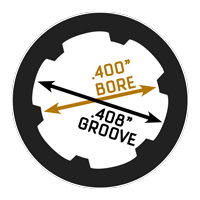 Is a twist of 1:13" too fast for lead bullets and BP? 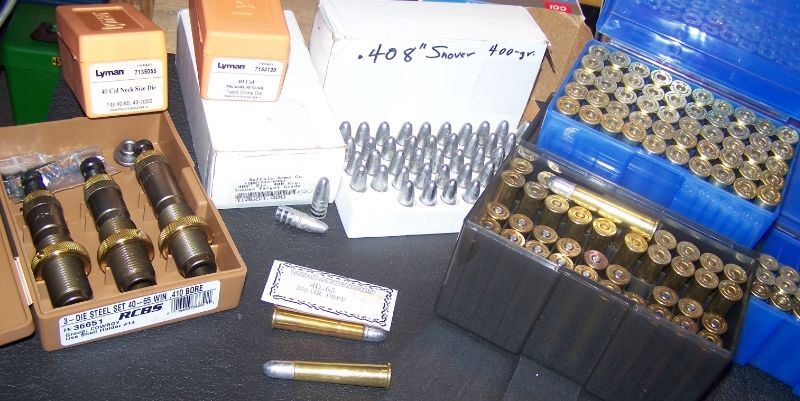 | |||
|
| one of us |
Hi RIP. To answer your questions about grove diameter and twist, grove diameters for .40-caliber black powder cartridge rifle generally run .409 or .410, but there is no reason you could not go .408 if you used an appropriately sized bullet. I know quite a few shooters who have played with the longer/larger capacity .40 black powder cases with 1:14 or 1:12 twist barrels and 440-grain bullets, or in .40-65 with heavy bore-rider bullets seated way out to gain case capacity for powder. One morning I shot an elephant in my pajamas. How he got into my pajamas I'll never know. - Groucho Marx | |||
|
| One of Us |
I have not used twists faster than one in 16 as I thought they might be a bit aggressive for alloy bullets. But I guess they will work. Oh, why not a .408 barrel? Because Douglas does not make them. | |||
|
| Powered by Social Strata | Page 1 2 3 4 5 |
| Please Wait. Your request is being processed... |
|

Visit our on-line store for AR Memorabilia

